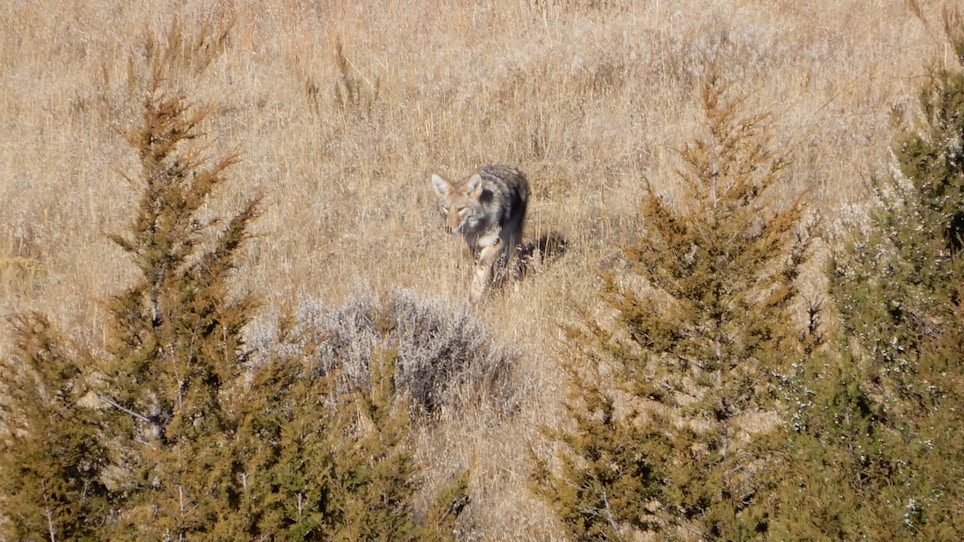
Study and understand a coyote's home range for better hunting opportunities, whether you're out west in open country or in tight cover in the Southeast. (Photo: Mark Kayser)
Your coyote calling may suffer from one simple flaw. Nobody is home. Whitetail deer have a home territory that averages just more than a 1 square mile and a core territory, where they spend 50 percent of their time, of just 100 acres. Coyotes, oftentimes an apex predator depending on their home location, require larger territories to hunt for food. They don’t have the luxury of browsing in a bedroom.
One square mile may work for a few coyotes living in a Golden Corral, all-you-can-eat environment, but most coyotes require larger territories. That means when you come calling, nobody might be home due to the demands of grocery shopping across town.
How big are coyote home territories? That question has many answers most of which depend on where a coyote lives as hinted at in the Golden Corral description. Here are a few examples of coyote home territories and reasons for the boundary size.
If you hunt coyotes in the Northland expect a sizeable home range for the coyotes living there according to the Minnesota Department of Natural Resources.
“Males may roam over territories as large as 36 square miles, though females usually stay within a six square mile area. Adult male coyotes may share the territory of two or more females, which may overlap the ranges of other males. Coyotes normally move two to three miles per day.”
Even in an urban environment coyotes have a tendency to roam, but not wide as in Minnesota. Maybe it’s due to the abundance of drive-through restaurants nearby. According to the Urban Coyote Research Project in Cook County, basically Chicago, packs have smaller home territories than loners.
“Radio-tracking revealed two different types of movement patterns affecting home range size among coyotes in Cook County. These differences were related to social behavior: whether a coyote was associated with a pack (pack coyote) or not (solitary coyote). Pack coyotes, also known as resident coyotes, are those that belong to a pack. Coyotes in a pack share a territory, which they defend together. In Cook County, pack coyotes have smaller territories than solitary coyotes, averaging less than 2 square miles (4.95 km2) but as large as 4.3 square miles (11.1km2). Solitary coyotes, also sometimes known as transient coyotes, are those coyotes that do not yet belong to a pack and therefore do not have a territory that they defend. In Cook County, solitary coyotes range over much larger areas and have home ranges averaging 10 square miles (26.8 km2).”
The National Forest Service Rocky Mountain Research Station Fire Sciences Laboratory has researched coyote home territories and how fires may affect them. For coyotes they list several differing sizes depending on geographic location. In Texas they noted coyote home range averaged a mere 2 square miles whereas in Washington state it expanded from 21 to 55 square miles. Arkansas coyotes had a home range average of 8 to 16 square miles although females were less at 3 to 4 square miles.
If you want to zero in further on the size of coyote territories in the country you hunt, reach out to your state wildlife department. You can also contact the regional office for the U.S.D.A. Animal and Plant Health Inspection Service Wildlife Services division. These government professionals work directly on cases where predators pose an immediate threat to livestock. Their background, training and experience provide them with territory insight to handle predator problems efficiently.





